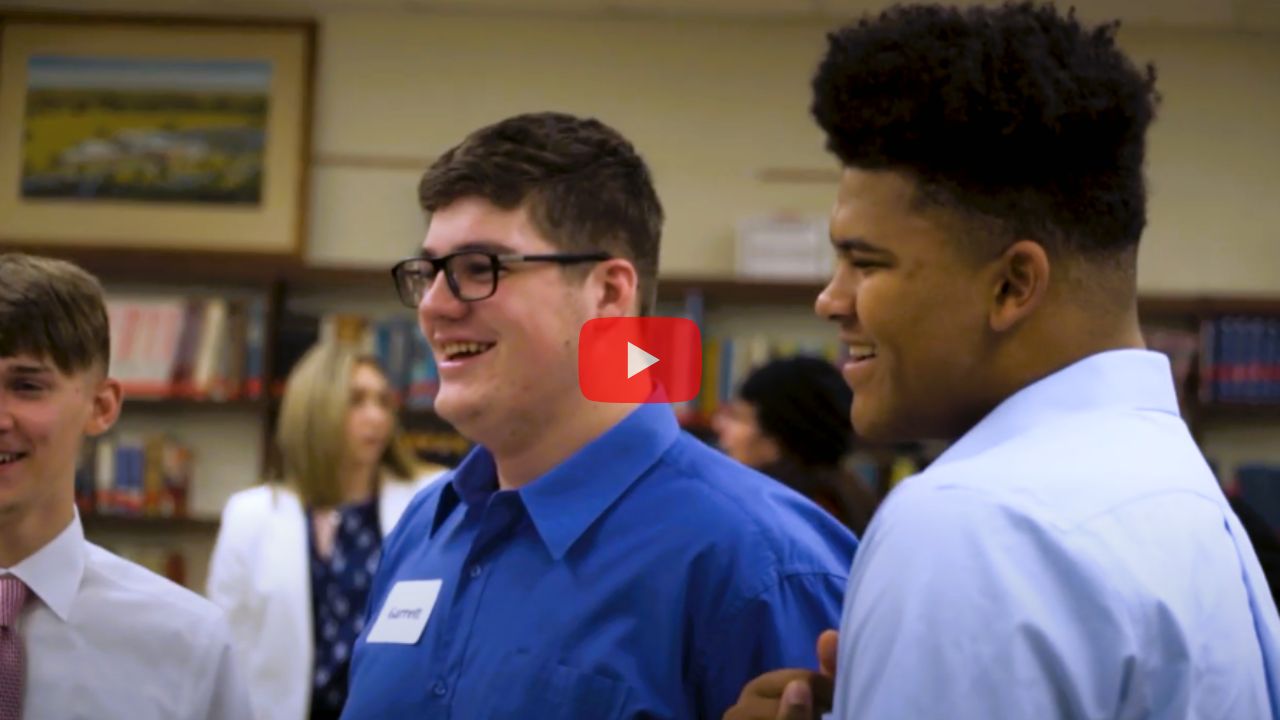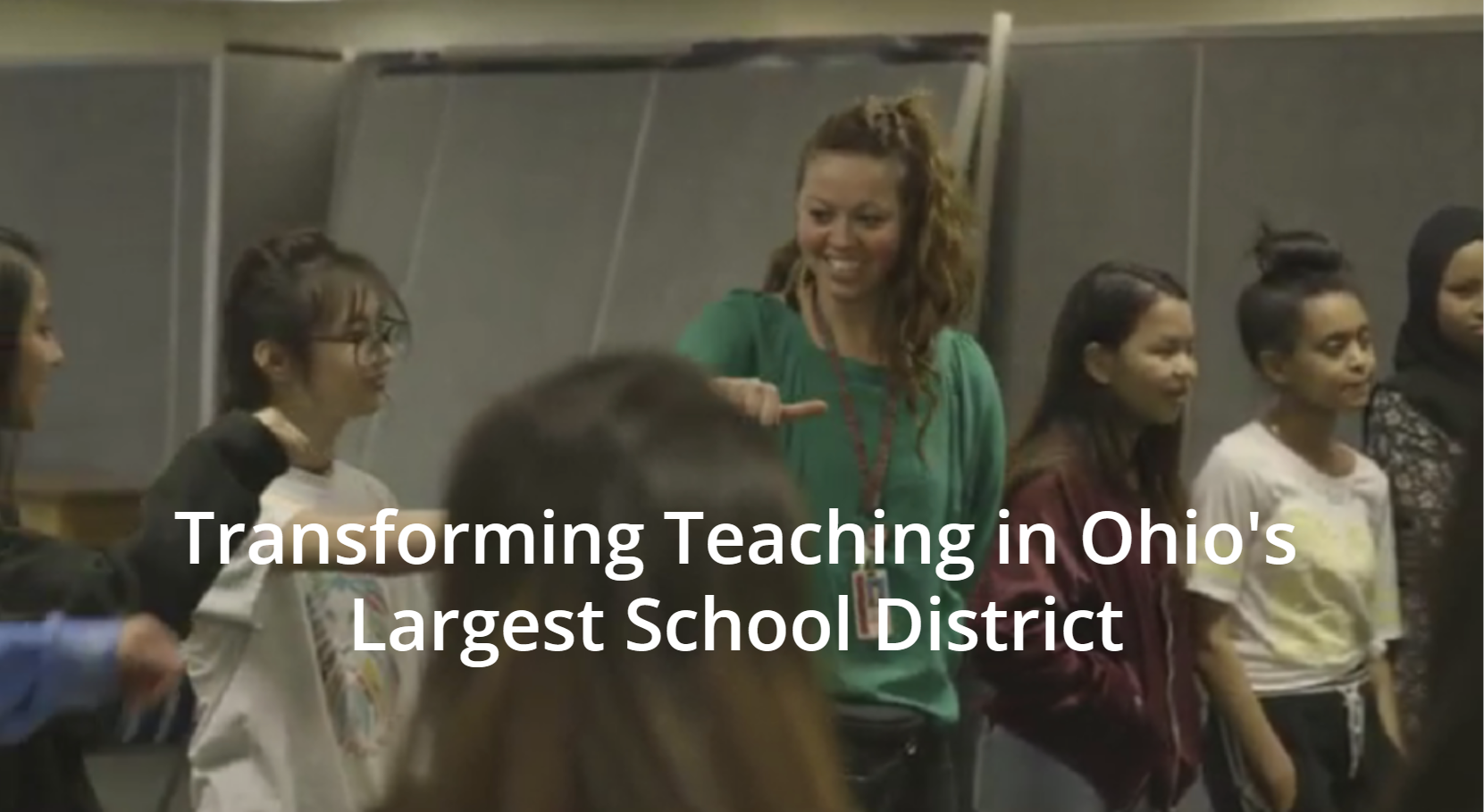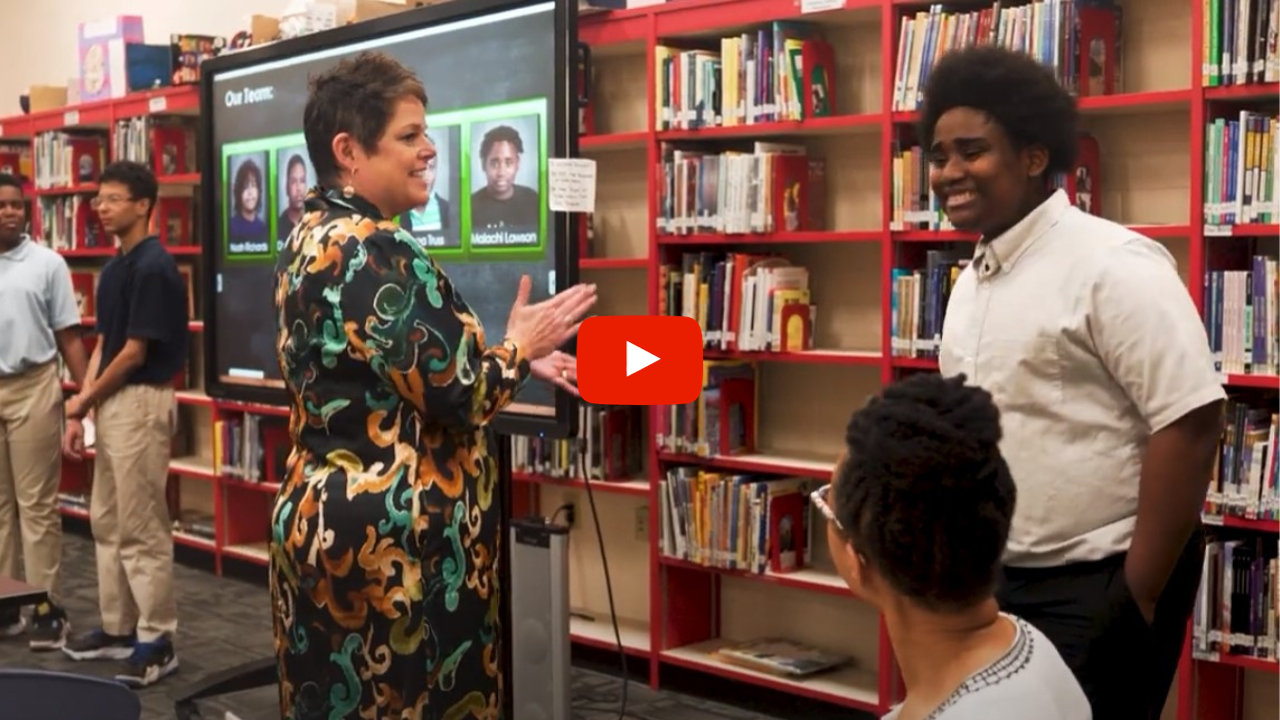In this episode, Doris chronicles the journey of two specific students through Hawken’s Entrepreneurial Studies program. She elaborates on those who have not thrived in traditional school and explains what the experience did for them as learners and emerging adults.
Alison: This is really a model for doing school better. It’s often what you say and the words you use. I was hoping you’d give some examples of how this does school better.
Doris: Yeah. That’s great. Get specific. There’s nothing better than giving specifics, right?
Alison: Yeah.
Doris: You’ve also heard me say that I learned a lot by developing strategies when I was teaching math for students in a very high-powered privileged private school that was heavy-duty math/science for the students who were failing it, had failed all along the way, et cetera.
The school system as it’s set up now doesn’t serve all kinds of kids. We talk about students, people who learn differently, we talk about all these different things, but basically there’s a fairly narrow band of students who thrive in this particular system with the standardized tests and the multiple choice under time pressure.
The things that you have to really learn how to perform well in like that aren’t real-world. I don’t know about you, but I’m 56 and I have yet as an adult to have something in front of me where what matters is that I’m able to perform under time pressure. I have multiple choice tests, but anyway.
I’ll give some examples of students who don’t thrive in the traditional school system, and yet in a model, in a course where they’re working on real problems and it’s all on them in the ways that we do it, they really thrive.
So I’ll give you some examples. One student, I’ll call him Adam, came into the class actually a year earlier when we were deciding of the kids who’d applied to be in the course, who should be allowed to take the course.
When he was brought up, his grades were very poor and he had a lot of learning issues. A lot of troubles; difficulties with anxiety and being able to function in a school setting with a lot of other people around.
As you would imagine, we’re sitting in a room deciding who should take this course, and the teachers and administrators and counselors in the room who knew Adam well, with one exception, the rest all said, “I don’t know how this student could possibly do well in a course like this. For one thing, he really struggles to communicate with other students. This is his biggest issue, one of his biggest issues, and this is entirely team-based. It wouldn’t be fair to the other students,” et cetera.
There was one counselor who knew him very well who advocated for him and said – she had been working with him very closely for years – “This is the first time I’ve seen him want something so much in school.” And in fact, he had written a letter. In addition to applying for it, he’d written a letter to say, “I know what my issues are and what you might say, but I really, really want to take this, and here’s why.”
So we took a shot on this student. He came into the course, and of course early in the course, lots of struggles. You have three weeks, a deadline, huge pressure to come up with something quality for this real business. You have three other teammates. Their fate is linked to yours, your performance. Their fate meaning their grade, right?
Alison: Right.
Doris: For juniors and seniors, it often matters a lot, right? He doesn’t have any of those skills, and he has a lot of – even more than that, anxiety and issues, et cetera.
This course, what he did and what he had to do, all of what happened in this course and what he did in this course had a profound impact on Adam.
I’ll give you an example. It was the second business challenge, late in the second business challenge, and a girl on his team comes and pulls me aside during class and says, “Ms. Korda, we’re having huge problems on our team right now.” Her face is red. She’s very upset. She’s a very sensitive person. She’s very upset. She said, “We’re yelling at each other. I really think we need your help. Adam is behaving in ways that we can’t deal with. We’ve waited a long time and we did it as nicely as we could, but we told him what we have trouble with, and we’re just having a huge issue. Will you please come help?”
I said, “Of course.” The minute she left, I noticed I had an email from Adam. The email from Adam was all the reasons that what they were saying to him were wrong and the ways in which they weren’t doing what they were supposed to do. It was an angry, defensive email.
I no sooner got done reading his email, then I looked up and he was standing in front of me, and he said this: “Ms. Korda, I wish I’d never hit send on that email. I know you just read it. Please disregard it. I was wrong. We’re having a lot of issues. I actually don’t want you to come in. This is the kind of thing that happens in the real world and on teams. We can handle it. We can deal with it.”
I said, “Okay, Adam.” It was lunchtime, and I said, “Do you want to have a conversation over lunch with me to talk about strategies you might use to help?” He said, “That would be really helpful.”
So I grabbed my salad. He grabbed his sandwich. We went in a room by ourselves. I only remember the first thing I said. I said, “You know, Adam, I’m sure there are things they did wrong, things you did wrong, et cetera, but the only thing you can do is address you. The only thing you can change is yourself and how you behave. So my suggestion overall is that what you talk about and what you think about is what you can do differently to make things better. And that’s it.”
I really don’t even remember how long the conversation lasted. I don’t remember what else was said. It is possible that that’s all I said, and that was that. He’s a very smart boy. But what I will tell you is that he went back in there after lunch, and they all came out afterwards. Actually, they didn’t come out immediately afterwards. At the end of the day, so two-and-a-half hours later, they came back and said, “We’re in a great place. We’re stronger than ever.” And they were all jazzed.
He ended up being in that semester one of the single students that others wanted most on their team. He was all in. He told me multiple times, “I’m not a good communicator. I never have been. It’s something I need to work on.” And he very deliberately, intentionally worked on it.
He was unbelievable. It was unbelievable the kinds of things he did. His form of creativity was able to flourish. He was able to contribute to the teams things that he had as strengths that were amazing that he hadn’t had a channel to show in school otherwise. The other students in the class came to know him in a way that no one at that school had ever known him before, which was really empowering for him.
Alison: Absolutely.
Doris: The whole thing was empowering. I have to say that from that point on, he never once had an issue. The pressure got huge with leaving his team in the lurch, not communicating, falling off the map at night. He was all in. It was really exciting.
He ended up coming out of that class improving – improving isn’t even a strong enough word. The way he took on classes in traditional high school after that, the way – not that Hawken is traditional, but you know what I’m saying.
Alison: Sure, sure, sure.
Doris: In his other classes, the way that he was a member of the high school community after that. In fact, he was completely and totally changed. He ended up applying and getting into one of the top programs in the country for college, and he’s thriving.
So that’s what I’m talking about when I talk about doing school better. I’ll give you another example.
Alison: Okay.
Doris: A girl I’ll call Jennifer. Jennifer came into this class and we noticed immediately, right off the bat, she’s a lovely girl; kind. Her posture was mostly about letting others speak, and then nodding her head in agreement.
In her first team, on her first business challenge, I had a couple conversations with her about the importance of – I don’t remember how I said it, but I probably would have said it something like this: “Jennifer, you’re getting along so well and there’s no issues whatsoever, and that’s worrisome to me. If you’re working on something with this kind of deadline, this kind of pressure that’s so new to all of you and there’s…”
Alison: There’s no conflict, there’s no difference of opinion.
Doris: Yeah. “You agree with everything all of the time, and I don’t actually hear your voice in the mix when I come into the team meetings, when the team comes to me, when I’m looking at their presentations, when I’m looking at their solutions. There’s nothing there of you, Jennifer. It worries me.”
I could go through a lot of different iterations, but it was really kind of interesting what happened. So through what happens in this course, what these students become aware of where they have to dig deep to decide what they should do next, they can’t decide just for themselves. It has to be something they decide in collaboration with others who have very different opinions and different ideas.
They inevitably, increasingly, as the deadline approaches, get into situations where very hard choices have to be made, just like in the real world when you have a huge project and you’ve got four people and you have a deadline and there’s only so much you can do. You have to make a lot of really hard choices with a lot of risk associated with making the wrong choice.
In the meantime, she’s experiencing what happens when she stays silent, even though she’s got another idea. The team goes ahead, and she realizes on the other side of it . . .
Alison: She should’ve said something.
Doris: She should’ve said something. She experiences the pain of that actually multiple times. So she starts experiencing this, and also starts, in conversations with us, in work that she’s doing in the class, she starts seeing that there are things that she does, there are things that she thinks, there are things that she contributes, that no one else does that actually have a lot of value. It isn’t about everybody do this problem and you either all get this answer and you’re right or you’re wrong. So really, you can only do poorly, right?
Alison: Right, right.
Doris: You can distinguish yourself by not being able to do it as opposed to being able to do it. This is very different. This is real problems. This is real stuff. It’s creative problem-solving. It’s critical thinking. There’s no lack of data out there.
Alison: Right. It’s multidimensional, layers upon layers.
Doris: Right.
Alison: Sure.
Doris: For example, as I’m talking, one popped into mind. This sounds like such a minor thing, but it’s so huge; what it means to interview. Why, when you can do so much research online and other sort of ways, why this going out and actually interviewing human beings is a part of the research that you simply cannot – you can’t do a great job with the kinds of problems we come up with without doing that.
Understanding when do I interview, why do I interview, and why is this useful? It’s actually very sophisticated. And most of them, it takes time, weeks and multiple piss-poor jobs of interviewing before they start realizing, oh, all right, I get why I’m doing this, and then how to do it well.
This girl, Jennifer, understood very early on. She’s very empathic. She understood very early on and knew how to interview well very early on. But she allowed others on her team to take the lead even in that, until she started realizing, wait a minute. “No, actually, Allison, I’m going to disagree with you,” says Jennifer. “Let me do this one. I don’t think we should interview like that. I think we should do…” I just remember that one, but there were multiples.
Over the course of this course, Jennifer starts discovering the very unique and very, very valuable skills and capabilities that she has and how crucial they are, how critical they are to the success of her teams and the solutions they come up with, and it is empowering. This isn’t happy talk with a teacher or parent saying, “Oh, Jennifer, you’re so smart. Oh, you’ll find your voice.” It’s Jennifer starting to really discover how actually valuable her voice and her mind is.
So in the final project of the semester, I mean, there’s a whole continuum with Jennifer. The final project of the semester, here’s what happens. A boy, I’ll call him Bill, pitches an idea that the students vote for. He’s one of the four founders. It’s a problem that has a social mission, a very large social component, and Jennifer wants to be on that team. It is Jennifer and three boys on the team.
Almost immediately after the project starts and the teams form, the founder becomes very ill. He was ill for a good two weeks. Really ill. He didn’t actually recover fully until into the summer.
Alison: Wow.
Doris: Great kid. It was just very rough. The other two boys on that team were having major struggles all semester for other reasons. In both cases, for very different reasons with very different stories, it culminated during that time, so they were absent a lot. When they were there, both of them at any given time were all in or not to varying degrees.
So we have four weeks, four huge, crazy, hard…
Alison: Yeah, building a business model and designing their evaluations, all of that. Yeah.
Doris: It’s crazy what they have to do in four weeks. It’s going to take all four all in, and we’re toward the end of the first week…
Alison: Down multiple teammates.
Doris: Yeah. So Jennifer and the only teammate who was not absent the day of the first share-out, so there are two of them out of four, and they give a share-out. After the share-out, I have a conversation with Jennifer, and I say, “Okay, Jennifer, what do you think?” She said, “We’re in trouble because…” I mean, the share-out was miserable.
Alison: Right.
Doris: There was nothing there, and one out of the four weeks has now gone by. I said, “Jennifer, what are you going to do?” She said, “I don’t know.” She left. She came back about an hour later and she said, “I need to lead this team.” She looked me in the eye and she said, “I need to lead this team.”
If you’d heard our conversations all semester long leading up to that, that Jennifer would say that in the way that she did was enormous.
I said, “Yes, you do.” And you know what? She did. The power and strength that that girl left this class with, the substantive confidence in knowing what she can do and what she’s capable of is powerfully huge. No multiple choice test or essay can do that for her.
Alison: That’s true. It’s interesting as well, I mean, I’m a firm believer that entrepreneurship, the entrepreneurial process is incredibly empowering. The notion of bringing any idea to life and learning your skills through that process is really powerful.
What I love that you touched on here was the element of team and other people around that, because so much of our identities are reflected back at us. We learn to understand ourselves through other people’s eyes. The fact that the course is so team-based and you have multiple opportunities working on different teams with different people, you really start to see yourself and where you fit and where you add value.
Doris: Yeah.
Alison: It’s really incredible. I think it adds another layer of depth to the work.
Doris: It’s a huge part of the model.







